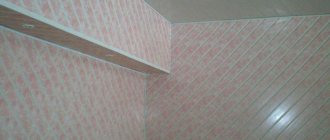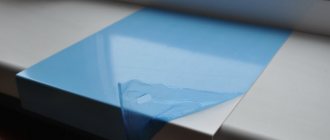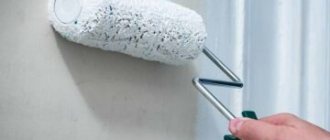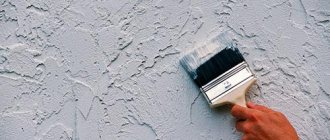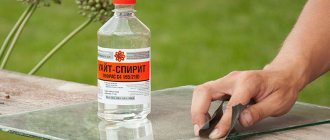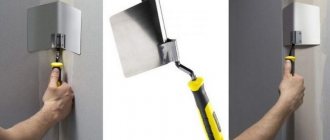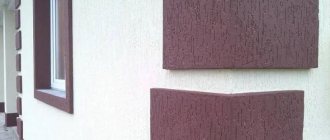Making slime is a fascinating hobby that is loved not only by children, but also by adults. In this regard, many novice creators will be interested in knowing how to thicken the slime if it turns out runny during the production process. The means at hand, which can be found in every home, will help correct the situation.
What do you need to make Slime with your own hands?
Ingredients: PVA glue (50 ml), shaving foam (bottle - 200 ml), sodium tetraborate (1/2 teaspoon). If you don't have shaving foam on hand, you can use regular shampoo. But it needs to be foamed first - this is convenient to do with a dishwashing sponge or washcloth.
Interesting materials:
Is it possible to replant lilacs in October? Is it possible to replant old rose bushes? Is it possible to cross the stop line? Is it possible to stop being afraid of spiders? Is it possible to send medicines by mail to Belarus? Is it possible to transfer to another university while maintaining the grant? Is it possible to put chicken eggs under a duck? Is it possible to apply for payment of 5000 through MFC? Is it possible to connect an outlet from a wall outlet? Is it possible to climb Elbrus in 1 day?
Thickeners for slime list
In fact, a wide variety of cosmetics and household products, pharmaceutical preparations and food products are suitable for this.
The list of the most popular includes:
- sodium tetraborate;
- laundry or dishwashing gel;
- salicylic acid;
- Teymurov spray/paste;
- Visin eye drops;
- Polish for hair;
- air freshener;
- liquid for contact lenses;
- starch;
- salt;
- sugar;
- gelatin;
- soda.
The recommended type of thickener is usually indicated in the slime recipe. If the prescribed component is not at hand, you can select an analogue from the list. In order for a replacement activator to perform its intended function, it is important to know its properties. We will analyze them in our article.
Description of PVA glue
The abbreviation for the name of the glue stands for polyvinyl acetate. This is a fundamental component of the composition, of which the finished substance contains about 95% of the total volume. This substance is also called polyvinyl acetate glue. This substance was discovered in 1912 by the German doctor F. Klatt, who a little later patented his invention. The first large-scale production was opened in the USA in 1937, and vinyl acetate began to be produced in the vast USSR in the early 1970s. Initially, it was used in the automotive industry.
Today this is one of the most common adhesive compositions, and almost everyone knows that PVA glue is a ready-made, homogeneous, viscous adhesive composition without a pronounced odor, used in various fields of human activity. The main color is light cream, but other shades of white are acceptable in some varieties.
Composition of PVA glue
Each manufacturing plant has its own unique recipe for the composition of what PVA glue consists of:
- It was already mentioned above that the main share is polyvinyl acetate. It can be from 85 to 95% in the composition.
- Water is present, but not in all varieties and can range from 0 to 10% of the total volume.
- Plasticizers are also required to be added to the glue (about 55% of the total volume). This can be EDOS or dibutyl phthalate to give the substance the desired consistency.
- The minimum amount of special additives in the composition is about 0.5%. They enhance certain qualities of the adhesive that are required for use in a particular area. For example, kaolin and chalk increase the strength of the glue, and gasoline or acetone increase moisture resistance.
How to clean PVA glue?
Even with the most careful use, no one is immune from accidental contact of glue on clean surfaces. If it is fresh, then only a damp cloth will suffice, which will easily wipe off the adhesive. If the stain is dry, you can pre-treat it:
- medical or ammonia;
- vinegar;
- refined gasoline;
- acetone or white spirit;
- turpentine;
- baking soda.
It is important to remember how to remove PVA glue from clothes. Before pre-treating the stain, it is better to try applying a little of any solvent to an inconspicuous part of the fabric, because it can react with it and ruin the item. If no changes occur, you can use a sponge or brush dipped in soapy water. It is permissible to wash pre-treated items in a washing machine.
Hydrogen peroxide will help thicken the slime.
An excellent remedy for obtaining the desired density and consistency of mucus is a pharmaceutical preparation - hydrogen peroxide. If you mix it with starch, the slime will be soft and pliable, and if you use baking soda instead, it will become elastic.
- Mix starch and cold water in a 1:1 ratio or with hot water 1:2. Add PVA and peroxide to the resulting jelly-like mass.
- For the second recipe, the proportions remain the same, but peroxide should be replaced with soda.
How to thicken slime at home - baking soda
Instead of an activator, you can include baking soda in the slime. It promotes progressive thickening of mucus and, in addition, it is much easier to find at home than sodium tetraborate.
Production technology:
- Pour a glass of warm water into a deep container and pour 2 tablespoons of soda into it;
- Add office glue to the solution, but do not stir, but carefully collect it, pulling it with a spatula from the edges to the center;
- It will take time and diligence for the glue to be saturated with the solution and take an elastic shape, but you will like the result;
- Once the mass becomes dense, you can begin kneading by hand.
The thickness of the slime depends on the type of glue used. If the slime turns out to be runny, you can add a few drops of boric acid to it.
How to quickly dry PVA glue?
Depending on the variety and type of parts being glued, the time it takes for PVA glue to dry varies. It can range from 10-15 minutes. when applied to paper in a thin layer for up to 6-24 hours on wood or fabric. To speed up this process, you can try:
- Before treatment, degrease the surface using alcohol or acetone. The absence of dirt, dust and grease particles will accelerate the adhesion of the substance.
- Provide mechanical pressure on the parts to be glued (put under a press).
- Move surfaces to a dry and warm place. As the temperature gradually increases, the drying time will also decrease.
- In addition, the smaller the layer of PVA glue, the faster it will dry. It is recommended to apply the composition in a thin strip.
Boric acid as a slime thickener
The basic composition of borax includes boric acid salts. They have a thickening effect on mucus, providing it with the desired consistency and elasticity. Taking this into account, not only tetraborate, but also other salt-containing products can be used as an activator. They help give shape and density to slimes.
From the point of view of elementary chemistry, they refer to active components that act as a catalyst in the process of a chemical reaction. The activator is added after mixing all the components. The amount depends on the desired density of the slime and its size.
It is important to know:
- Suitable thickeners instead of boric acid include: Visin eye drops, contact lens liquid, or table salt solution.
- Borax powder may cause allergic reactions. You should wear gloves when working with it. Before using the drug, it must be dissolved in water in the proportion of 1 tablespoon of powder to 1 glass of water.
How to thicken slime using air freshener
Instead of boric acid, you can use aerosol air freshener or hairspray when making slimes.
The recipe is elementary. Pour a tube of office glue or PVA into a dry container. Spray the adhesive mixture with varnish or freshener. Do not spray the entire bottle at once. Spraying should be portioned and with mandatory mixing of the mass.
As a result of the work, an elastic lump will form. In order for it to gain elasticity and stretch well, you need to give the slime 20-30 minutes to rest.
It is important to know:
- Not all air fresheners are suitable for making slime. Recommended ones include AirWick.
- When choosing a varnish, give preference to a product with high hold.
- Varnish and freshener are interchangeable components, not companions in one recipe.
- You should work with aerosol products in a well-ventilated area.
- A soda solution will help you achieve consistency from a too liquid mass.
How to store PVA glue?
Depending on the manufacturer, PVA stationery glue and its other varieties can be stored for 6 months. up to 2 years while maintaining the tightness of the original packaging. Opened glue is generally stored for 3-6 months, after which it loses its properties. However, all these terms are correct only under the correct storage conditions for the composition:
- The air temperature should be within +5…30℃.
- Humidity for liquid substances is no more than 75%, and for dry mixtures for preparation no more than 50%.
- It is better to protect the container from exposure to direct sunlight.
- The original packaging should not be opened unless use is necessary or undesirable under the existing conditions.
Activator composition
Making homemade slimes is impossible without an activator. This component starts a chemical reaction in the viscous base and converts it into an elastic mass. When a thickener is added to any polymer base, a partial hardening process begins, as a result of which the original liquid acquires density and elasticity. The main activating substances in toys are boric acid derivatives (borates) and salicylates.
To prepare “taffy”, several types of different thickeners are used. These substances differ in composition and origin. Based on their composition, activators are divided into the following categories:
- liquid chemical solutions and aerosols;
- dry powdery substances.
It’s not difficult to make the right and high-quality slime - the main thing is to choose the right thickener and mix it thoroughly with the main mass for the slime. Kneading allows you to evenly distribute the active substance so that the entire initial mass is involved in the reaction.
Starch to thicken slime
Handgam from starch is very easy to make. To do this you need to take shampoo, vegetable oil and starch. If desired, add dye to the oil and shampoo and mix. We begin to gradually add starch so that the mass takes on a dough-like consistency.
If you replace the shampoo with condensed milk, you get another edible slime from which you can make jewelry.
Pros and cons of PVA glue
Like any other product of the chemical industry, universal PVA glue has both its advantages and disadvantages. The advantages include:
- No toxic components or pungent odor.
- High adhesive properties and good filling of cracks and gaps.
- Fireproof properties and moisture resistance.
- Affordable cost and economical consumption.
- Possibility of gluing different surfaces.
PVA glue also has its disadvantages:
- The composition cannot be stored in the cold, as it loses its properties when left at low temperatures for a long time.
- In some varieties that do not contain additives that increase resistance to moisture, delamination of the glued parts may occur when water enters.
- If applied to a clean surface, it may leave marks that are difficult to remove once dry.
Basic Recipes
Before making a toy, you need to prepare components and materials: a container in which the components will be mixed, a stirring stick, rubber gloves and a container for further storage of the slime. The ingredients are combined in a bowl and kneaded until the final elastic state. The basic recipe can be varied by adding bright food colors or glitter to the slime, so it will be even more interesting for the child to play.
Rainbow
To make rainbow slime you will need different colors of food coloring. In several bowls, separate for each color, mix the components and bring the mass to the desired consistency. Ready-made slimes of different colors are combined into one, the resulting toy will be multi-colored.
Classic version of glowing slime
To make glowing slime, you need to take:
- glue (regular stationery or PVA, homemade glue for slime is also suitable);
- activator - sodium tetraborate (you can replace it with lens fluid, borax or borax);
- fluorescent marker.
Step-by-step instructions for making glowing slime are presented below:
- Prepare a luminous liquid from the core of a felt-tip pen and water.
- Glue is added to the resulting solution.
- The mixture is supplemented with any activator from the list.
- The resulting composition is mixed first with a stick, then as it thickens with hands protected by gloves.
Thickener for slime at home: gel for washing and washing
Do you want to know how you can thicken slime if you don’t have tetraborate or don’t want to use it? Use Fairy dishwashing gel or Persil washing gel as a thickener.
- Recipe 1 . Mix a package of PVA glue (125 ml) and a teaspoon of Fairy detergent. Mix well. The mass quickly takes shape and is easily kneaded with your hands. The result is an original mother-of-pearl slime.
- Recipe 2 . Mix a bottle of PVA glue with 2 capsules of washing gel. To ensure the mixture is homogeneous, knead it thoroughly with your hands or use a blender. After this, leave the slime to rest for 30 minutes. After half an hour it will be ready for use.
This recipe is not suitable for people prone to allergic skin reactions.
Advice for young designers
Having learned from the article how you can thicken slime, you are free to begin your own creativity. The main thing to remember is that each type of thickener presented gives the toy special properties. Some maximize elasticity and softness, others increase elasticity and ductility, and others affect the texture and format of the surface.
- Tips on how to easily make transparent slime →
Try to create a whole collection of slimes with your own hands, using simple ingredients available at home, easily available at the pharmacy or in online stores. Be bold, create unique designer slimes.
Slime consistency
The slime does not reach the required density for several reasons:
- Expired components. Before purchasing and using the ingredients needed to make slime, carefully check their expiration dates. Adding expired slime to the composition will reduce its properties.
- Large amount of water. When creating slime, it should be in moderation, otherwise it will simply spread. In addition, excess fluid suppresses the connecting reactions of the components.
- Changing the recipe. To get a high-quality toy, you must strictly follow the instructions for its manufacture and use the products specified in the recipe. By replacing them with analogue ones, you may not be able to make the right choice.
- Failure to comply with proportions. Most often, an insufficient amount of activator leads to the fact that the slime does not thicken. When correcting the situation, you should add it to the mucus carefully, in small portions.
Video on how to thicken slime: TOP 10 thickeners
It's time to take a closer look at the question of how you can thicken slime. If during the creative process there is a clear miscalculation with one of the components and the slime does not want to hold its shape, spreads or sticks to your hands, it is necessary to correct the defect. There are several ways to thicken mucus. Try each of them:
Almighty glue
In the case where the slime was made on the basis of PVA glue diluted with water, there may be an excess of liquid that inhibits the action of the activator. An additional portion of glue and thorough kneading of the mass will allow you to correct a small defect.
Exposure to cold
Low temperatures contribute to the thickening of slimes made on any basis (plasticine, glue, cosmetics and detergents). That is why, after the last stage of kneading, they must be placed in an airtight container and sent to the refrigerator for an hour and a half.
Mixing
This process must be repeated when introducing each of the slime ingredients. Stirring can be called a mechanical catalyst. It accelerates chemical reactions, forcing components to quickly and correctly interact with each other, leading to the desired result. Mixing is done not only with a spoon or spatula, but also by hand.
We call on the thickener to help
If the above methods do not give the desired result, there is only one way out - using an activator. A few drops are enough. You don't need to add much as the slime can become tough and brittle.
Gelatin for slime production
To get not a classic slime, but a trembling mass, gelatin is used. The toy will not have the usual plasticity. You won't be able to stretch it or mold it into something. It is more suitable for water procedures. These moydodyr slimes are made from gelatin and shampoo or shower gel.
Mix gelatin solution with cosmetic product. Stir well, pour into shaped molds and refrigerate for an hour and a half. After this, you can take the collagen-containing slime with you into the bath and wash.
PVA glue - characteristics
To better understand why PVA glue is so popular, its technical characteristics will help:
- The adhesive ability of the composition is high and ranges from 40 to 500 n/m depending on the variety.
- Moisture resistance, which allows it to be used outdoors and in rooms with high humidity - baths, saunas, bathrooms.
- Frost resistance. The composition is able to withstand about 6 cycles of freezing and thawing without losing its original properties.
- The absence of a strong odor and environmental safety, so this glue is used even in kindergartens for creative classes with children.
- Resistant to UV rays.
- Fire and explosion safety. Therefore, glue is used in areas of increased fire danger, laboratories and workshops.
- Low shrinkage and elasticity after drying, which does not disturb the structure of the glued surfaces.
- Economical consumption of about 1 kg per 4-5 sq.m of surface, depending on the thickness of the layer and an affordable price.


